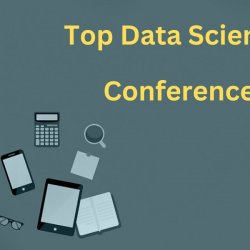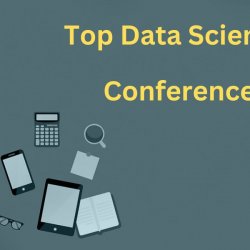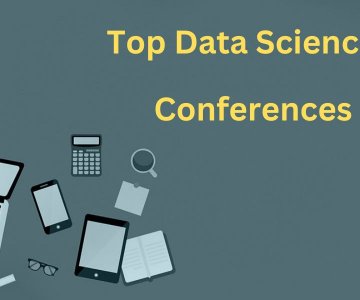How to Make the Most of Your First Impression of Data Science


Understand Data Science
Data Science has grown rapidly in recent years and has become a major tool for many businesses. While it can seem daunting to get started, there are ways to make the most of your first impression of Data Science. After all, it is a powerful asset to any organization that wants to make informed decisions.
To truly understand Data Science, it is important to be aware of its fundamental concepts. Data Science is the practice of collecting and analyzing data to gain meaningful insights and knowledge from it. It involves using a variety of methods such as modeling, statistics, machine learning algorithms, and artificial intelligence to extract information from large amounts of data.
Once you have gained an understanding of the basic concepts, you will be able to start exploring how Data Science can help your business reach its goals. You can use data visualizations such as charts and graphs to easily display your findings and track progress over time. Furthermore, you can leverage machine learning algorithms like regression analysis and clustering techniques that allow you to identify patterns or relationships within data sets.
Finally, don’t forget the importance of communication when implementing data science into your organization’s workflow. Make sure everyone involved understands the processes involved in producing valuable insights from the gathered data sets so that they can effectively use them for decision-making purposes. The ability to easily communicate results is often key in ensuring everyone’s expectations are met regarding the results obtained from Data Science projects.
Adapt to The Technology
To begin with, it’s important to understand the complexity and changes in technology. As technology continues to evolve, so too do the types of data that companies must manage and analyze. With this comes increased importance in developing a comprehensive comprehension of data science concepts for success.
While the inherent benefits of digitalization are well documented, there are numerous options for organizations looking to gain a competitive edge through data science processes. With capabilities such as predictive analytics, natural language processing (NLP), machine learning (ML), and artificial intelligence (AI), companies are presented with an incredible range of opportunities through these methodologies. Check out:- Machine Learning Reviews
Of course, knowing data science is essential but understanding the basics is just as important. It is crucial to understand which data insight techniques can be used at which points in time throughout the process and how they work together to efficiently glean valuable insights from large datasets. Additionally, familiarizing yourself with automation tools can help increase efficiency levels to get more done within shorter time frames by automatically completing routine tasks without any manual intervention on your part.
Utilize Your Resources
Making the most out of your data science career starts with building relationships with your peers. Networking with fellow data scientists is critical as they are often willing to provide advice on how to tackle problems while also expanding your professional network. Many major events that involve data science also provide opportunities for networking, such as conferences and hackathons.
Another important resource to tap into is industry mentorships. Having access to experienced professionals in the field provides great insight into what strategies work best. Not only does this allow you to learn from experienced professionals, but it also serves as a way for you to further connect with the larger industry.
Of course, learning should not end with networking and me. There’s – there are plenty of valuable online courses as well as skill development tools that can help improve your understanding of data science fundamentals. From online boot camps to instructional videos and webinars, there are plenty of options available for those looking for a more comprehensive approach to learning. Furthermore, participating in forums related to data science is also an excellent way to stay up to date on new trends while talking with others who share similar interests and goals. Check out:- Data Science Reviews
Improve Your Problem-Solving Skills
To begin, it helps to recognize the patterns that underlie the data. Pay attention to how different indications interact or correlate with one another so that you can accurately interpret the data. Then ask questions about the data set—what does it reveal about your research question or problem statement? Doing so will help shape your approach toward finding a solution.
Once you have a basic understanding of the data set, then it’s time to think critically and analyze it in more detail. Break down complex datasets by examining variables and their relationship with others to identify any underlying trends or correlations that might not be immediately obvious. This process will enable you to recognize important factors in solving the problem at hand. Furthermore, utilize all available resources—such as documents, diagrams, graphs, and statistical methods—to gain further insight into the data you are working with.
Practice Design Thinking
It all starts with conceptualizing data. This means taking the raw facts and figures and turning them into surprising revelations about the behavior of your customers or the performance of your business. Once you have done this, it’s time to define user needs. To make sure that your data science project delivers real value, it’s important to understand exactly what users need from their analysis before you start looking for answers within the data itself.
Next comes brainstorming solutions and creating prototypes. This is where creative thinking comes in – by seeking out innovative ways of exploring the data and coming up with potential solutions on paper before you dig deep into the analysis. This makes it much more likely that you end up with an effective outcome because it helps narrow down potential paths without getting bogged down in too many details early in the process.
Once you have created your prototype, it’s important to test & iterate until all user needs are satisfied. Testing helps identify modifications or changes needed to optimize results, while iterating involves refining your approach until all user requirements are met adequately. By doing this at each step of the way, you can ensure that your project delivers maximum value for users as well as overall ROI for the business.
Network with Professionals in the Field
First, research potential mentors and networking opportunities. Keep up to date on industry events, conferences, online groups, or local meetups where you can meet professionals in the field. This will give you an idea of who is out there and what topics they cover.
Second, leverage online platforms like LinkedIn or Twitter to reach out to professionals in the field. You should prepare an interesting yet professional introduction that showcases your knowledge and experiences that relate to data science. This could be as simple as saying something like “Hey I’m [name], I’m looking to break into data science professionally. I saw that you work/are involved in this industry and wanted to make an introduction”
Third, find a shared interest or topic of discussion based on both your interests and experiences. This could be anything from asking questions about their career path in data science or discussing a project that they have been working on recently in the field. You want this conversation to be meaningful but also show off your technical knowledge of the subject matter. Check out:- AI reviews
Study Existing Projects and Solutions
You should aim to compare different results and explore any data that is available. This will help you to identify any trends or anomalies. Perhaps there is a way to use modeling techniques to further analyze the data or gain more insight into how this project could be approached. This initial phase can tell you a lot about both the scope of the project as well as its potential.
Once you have this first impression of what data science can offer, it’s important to continue on that journey by building upon these initial findings. Keep researching and exploring new information, utilizing what was gathered during this initial phase to generate new ideas. It takes time and effort, but in doing so, you will ultimately be able to create a strong foundation for your project that will inform its implementation phase.
By studying existing projects and solutions before taking this journey into data science, you can make the most of your first impression of it. Through brainstorming, research, comparison, exploration, analysis, and modeling techniques – all of which come together just like pieces of a puzzle – you are giving yourself an advantage as you delve into this important field.
Making a great first impression of data science takes commitment and consistent practice but will allow readers to solidify their understanding and be empowered to take on any challenge.
First, it is important to familiarize yourself with the basics of data science, including machine learning concepts and algorithm implementation. Acquiring knowledge in this area will give you the foundation that you need to analyze and visualize data in a meaningful way. To further enhance your understanding of data science principles, consider exploring common statistical analysis tools used in the field such as Python, R, and SQL. Check out:- Reviews
Second, it’s beneficial to gain insight into the biology of data. Examining patterns in different kinds of datasets will help you understand how data functions within different contexts. Learning about different types of advanced analytics techniques such as predictive modeling or natural language processing will also support your journey to becoming a successful data scientist.
Third, it is recommended that you become familiar with the programming language used so that you can understand how code helps produce results from datasets or automate complex tasks. Programming languages like Java, JavaScript, C++, and Hadoop are all popular choices for data scientists so it is wise to get acquainted with at least one or two of these languages before embarking on more sophisticated projects in the field.




Ingen kommentarer endnu